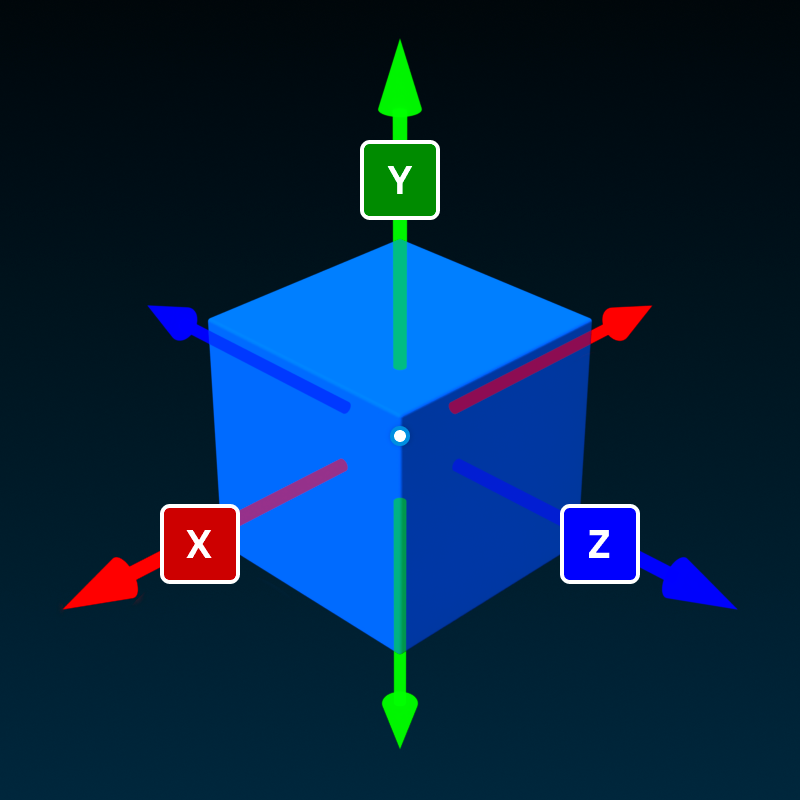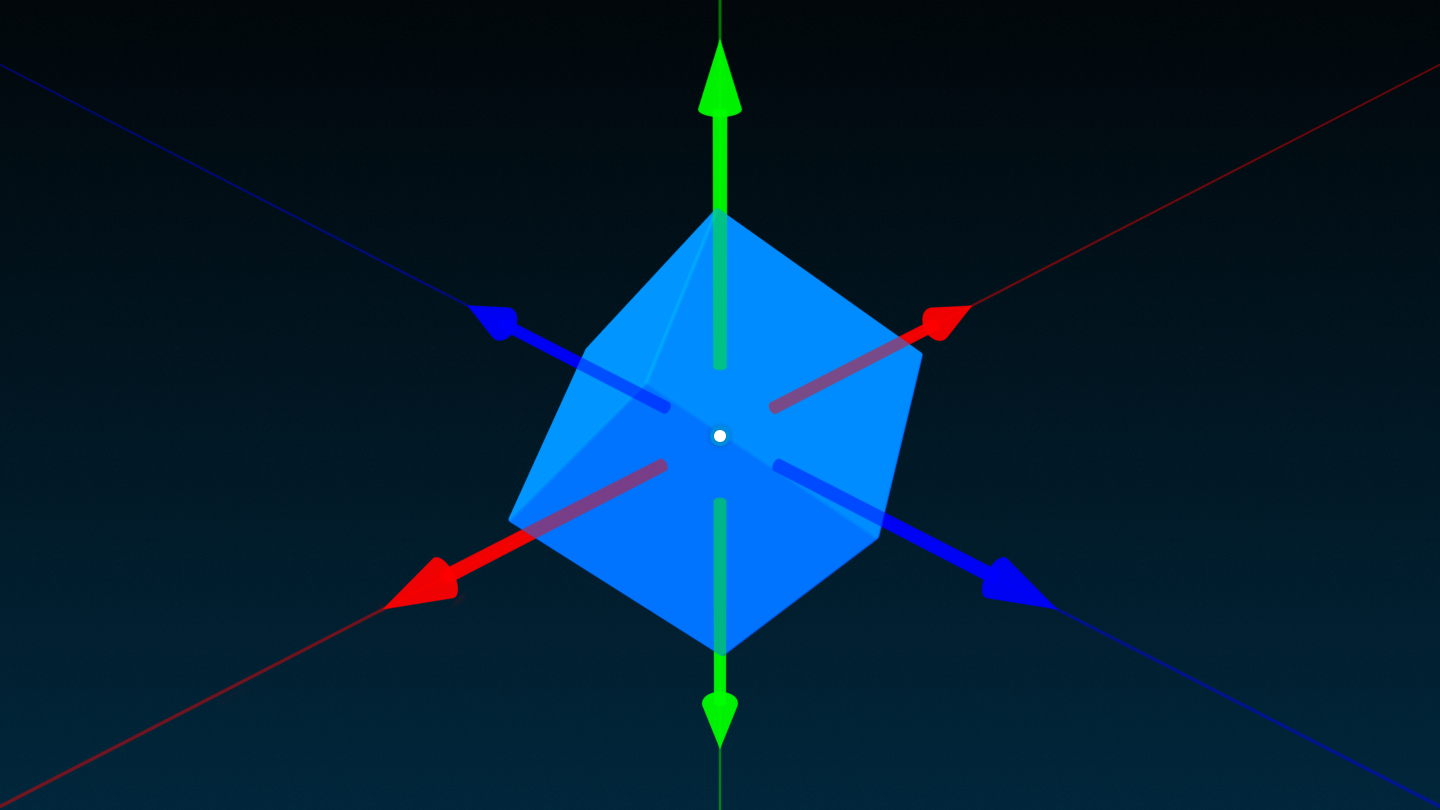홈 탭에는 경험 빌드 및 테스트를 위한 기본 도구가 포함되어 있습니다.

클립보드
왼쪽에서 첫 번째 섹션에는 인스턴스 복사, 잘라내기, 붙여넣기 및 복제를 위한 도구가 포함되어 있습니다.탐색기 창에서 3D 세계 개체 또는 인스턴스에서 이러한 작업을 수행할 수 있습니다.
| 액션 | 바로가기 | 설명 |
|---|---|---|
| 붙여넣기 | CtrlV (Windows) ⌘V (Mac) | 클립보드 내용을 삽입합니다. |
| 복사 | CtrlC (Windows) ⌘C (Mac) | 현재 선택 사항을 클립보드에 복사합니다. |
| 잘라 | CtrlX (Windows) ⌘X (Mac) | 현재 선택 항목을 잘라서 클립보드에 넣습니다. |
| 복제 | CtrlD (Windows) ⌘D (Mac) | 계층에서 동일한 수준에서 현재 선택을 복제합니다. |
변환 도구
주요 변환 도구에는 선택 , 이동 , 크기 조정 , 회전 이 포함됩니다.도구를 선택하면 뷰포트에서 선택한 개체에 시각적 드래거가 표시됩니다.




도구 변환 스냅 증가량 은 도구 모음의 모델 탭에서 이동/크기 조정 또는 도 회전을 위해 스터드에 기반을 두고 있습니다.변환하는 동안 Shift 키를 길게 누르면 일시적으로 스냅을 전환할 수 있습니다.
모드
모드 선택기는 부품을 이동하거나 회전하는 동안 표준 기하 변환과 메카닉 제약 조건의 시뮬레이션 사이를 전환합니다.

충돌
충돌 확인란은 개체를 변환할 때 충돌 상태를 전환합니다.충돌이 꺼져 있으면 개체를 이동하고 크기를 조정하여 서로 겹치게 할 수 있습니다; 충돌이 꺼져 있으면 개체를 변환하여 다른 개체와 겹치게 할 수 없습니다.

좌표 변환
에서 Windows 또는 에서 Mac는 세계 좌표 또는 개체의 로컬 좌표에 관련된 개체를 변환하는 것 사이에서 전환합니다.로컬 모드에서는 개체의 오른쪽 하단에 L 기호가 나타납니다.

지형 편집기
편집기 버튼은 정적 지형을 만들고 모양을 지정하는 도구가 있는 창을 엽니다. 자세한 내용은 지형 편집기 를 참조하십시오.

도구 상자
도구 상자에는 게시한 모델, 이미지, 메쉬, 오디오 등을 포함하여 그룹에 속한 사람들이 게시한 모든 것이 포함되어 있습니다.The Toolbox includes all of the models, images, meshes, audio, and more that you've published, or those published by groups you belong to.Roblox 또는 Roblox 커뮤니티 멤버가 만든 자산 선택도 포함됩니다.

부품 삽입
부분 버튼은 작업 영역에 새 부분을 삽입합니다.버튼의 작은 드롭다운 화살표를 클릭하면 블록 , 구체 , 쐐기 , 모서리 쐐기 또는 실린더 중 하나를 선택할 수 있습니다.자세한 내용은 부품을 참조하십시오.

UI 디자이너
UI 버튼 은 레이블, 프레임 및 버튼과 같은 일반적인 화면 UI 개체를 신속하게 삽입, 크기 조정 및 위치 조정할 수 있는 탭을 엽니다.


3D 가져오기
가져오기 3D 도구는 Studio에 거의 모든 유형의 또는 및 관련 텍스처 파일을 가져올 수 있습니다.자세한 내용은 3D 가져오기를 참조하십시오.

색상 위젯
색상 위젯에서 작은 드롭다운 화살표를 클릭하면 헥사곤 색상 선택기가 나타나고

기본적으로 전체 색상 버튼을 클릭하면 선택한 색상이 모든 선택된 부품에 적용됩니다.대신 채우기/페인팅 워크플로를 선호하는 경우 색상 작업을 도구로 전환하고 3D 뷰포트에서 부품을 클릭하여 선택한 색상을 적용합니다.

재료 위젯
재료 위젯에서 작은 드롭다운 화살표를 클릭하면 재료 선택기가 나타나고

기본적으로 전체 재료 버튼을 클릭하면 선택한 재료가 모든 선택된 부품에 적용됩니다.대신 채우기/페인팅 워크플로를 선호하는 경우 재료 작업을 도구로 전환하고 3D 뷰포트에서 부품을 클릭하여 선택한 재료를 적용합니다.

그룹 도구
개체를 선택하고 그룹 버튼을 클릭하여 그룹화할 수 있습니다.You can group objects into a 모델 by selecting them and clicking the 그룹 button.이 작업에는 Windows의 기본 바로가기 CtrlG 또는 Mac의 기본 바로가기 ⌘G가 있습니다.
또는 버튼 옆에 있는 작은 화살표를 클릭하고 그룹을 폴더로 선택 을 선택하여 개체를 폴더로 그룹화할 수 있습니다.이 작업에는 AltCtrlG (Windows) 또는 ⌥⌘G (Mac)의 기본 바로가기가 있습니다.
기존 모델이나 폴더를 분리 하려면 버튼 옆에 있는 작은 화살표를 클릭하고 분리 를 선택하십시오.이 작업에는 Windows의 기본 바로가기 CtrlU 또는 Mac의 기본 바로가기 ⌘U가 있습니다.

도구 잠금
잠금 도구를 활성화하려면 잠금 버튼 옆에 있는 작은 화살표를 클릭하고 잠금 도구를 선택하십시오.이 작업에는 AltL (Windows) 또는 ⌥L (Mac)의 기본 바로가기가 있습니다.
한 번 활성화되면 도구는 두 상태 모두에서 "키"로 작동합니다. 잠금 해제된 개체를 클릭하면 잠금 해제되고, 잠긴 개체를 클릭하면 잠깁니다.
모든 개체를 잠금 해제하려면 버튼 옆에 있는 작은 화살표를 클릭하고 모두 잠금 해제 를 선택합니다.

앵커 전환
앵커 는 부품이 물리학에 의해 이동 불가능 인지 여부를 제어합니다.When Anchored , 부품은 중력, 다른 부품 충돌, 다른 부품 겹치기 또는 기타 물리 관련 원인으로 인해 위치가 결코 변경되지 않습니다.이 작업에는 AltA (Windows) 또는 ⌥A (Mac)의 기본 바로가기가 있습니다.

플레이테스트 옵션
경험을 플레이테스트하는 세 가지 일반 옵션이 있습니다.버튼을 클릭하면 현재 선택한 모드의 플레이테스트가 시작되고, 버튼 아래에 있는 작은 화살표를 클릭하면 다른 모드를 선택할 수 있습니다.

| 모드 | 바로가기 | 설명 |
|---|---|---|
| 플레이 | F5 | 경험을 시뮬레이션하기 시작하여 아바타를 삽입합니다(SpawnLocation 또는 주위의 좌표는 (0, 100, 0). |
| 여기에서 플레이 | 경험을 시뮬레이션하기 시작하여 카메라의 현재 위치 앞에 아바타를 삽입합니다. | |
| 실행 | F8 | 경험을 시뮬레이션하기 시작하지만 아바타를 삽입하지 않습니다.시뮬레이션은 현재 카메라 위치에서 시작되며 Studio 카메라 제어사용하여 주변을 탐색할 수 있습니다. |
플레이테스트가 실행되면 다음 옵션이 사용 가능해집니다:

| 액션 | 바로가기 | 설명 |
|---|---|---|
| 클라이언트/서버 | 플레이 솔로 모드에서 플레이테스트 중( 플레이 또는 여기에 플레이 ), 클라이언트 모드와 서버 모드 사이를 전환합니다.자세한 내용은 Studio 테스트 모드에 참조하십시오. | |
| 중지 | ShiftF5 | 경험의 시뮬레이션을 중지하고 모든 개체와 인스턴스를 플레이 전 플레이, 플레이 여기 플레이, 또는 실행이 클릭되기 전까지의 상태로 재설정합니다. |
게임 설정
게시된 경험에만 액세스할 수 있는 게임 설정 버튼을 통해 기본 정보, 권한, 보안, 아바타 설정 등을 업데이트할 수 있습니다.자세한 내용은 게임 설정 참조 페이지를 참조하십시오.

팀 테스트
공동 작업 세션 중에 팀 테스트를 클릭하면 다른 편집자와의 플레이테스트가 시작되고 게임 종료는 현재 플레이테스트에서 나옵니다.
